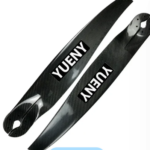
body fillers
What are Body_Fillers?
Body_fillers, also known as “bondo,” are a type of material used to fill in gaps, dents, and scratches on the surface of a car or truck. These materials are designed to bond to the metal surface of the vehicle and create a smooth, even surface that can be painted over. They come in two main types: polyester and epoxy.Types of Body Fillers
Polyester Body Fillers
Polyester body fillers are the most common type of body fillers used in automotive repair. They consist of a mixture of polyester resin and a filler material, usually talc or calcium carbonate. Polyester body fillers are easy to work with, quick-drying, and can be sanded easily. However, they tend to shrink over time, which can lead to cracking and other issues.
Epoxy Body_Fillers
Epoxy body fillers are a newer type of body filler that has gained popularity in recent years. They consist of a mixture of epoxy resin and a filler material, usually a type of microsphere. Epoxy body fillers are more expensive than polyester fillers, but they are also more durable and less likely to shrink or crack over time. They are also less porous than polyester fillers, which means they are less likely to absorb moisture and rust.Applications of Body_Fillers
Body_fillers are used in a variety of applications in automotive repair, including:- Filling in dents, scratches, and other imperfections on the body of the vehicle
- Repairing rust holes and other types of corrosion
- Smoothing out body lines and creating a uniform surface for painting
- Creating custom body shapes and modifications
Benefits of Body_Fillers
There are several benefits to using body fillers in automotive repair, including:- Quick and easy to use
- Inexpensive compared to other types of repair methods
- Can be used to create custom body shapes and designs
- Can be sanded and painted over to create a smooth, uniform surface
Drawbacks of Body_Fillers
While there are many benefits to using body fillers, there are also some drawbacks to consider, including:- Body fillers can shrink over time, leading to cracking and other issues
- They are not as strong or durable as the original metal surface of the vehicle
- They can absorb moisture and rust if not applied correctly
- They can be difficult to remove if applied incorrectly
How to Apply Body_Fillers
To apply body_fillers, you’ll need a few tools and materials, including:- Body filler material
- Sandpaper
- Mixing board
- Spatula or applicator
- Solvent or cleaning agent
 Here’s how to apply body fillers:
Here’s how to apply body fillers:
- Clean the surface of the vehicle where you’ll be applying the body filler. Use a solvent or cleaning agent to remove any dirt, grease, or other contaminants.
- Mix the body filler material according to the manufacturer’s instructions. You’ll need to mix the resin and hardener together on a mixing board.
- Apply the body filler to the damaged area using a spatula or applicator. Spread the filler evenly over the surface, making sure to fill in any gaps or imperfections.
- Let the body filler dry completely. This can take anywhere from 15 minutes to several hours, depending on the type of filler
- Once the body filler is dry, use sandpaper to smooth out the surface. Start with a coarse grit sandpaper and work your way up to a finer grit to create a smooth, even surface.
- After sanding, clean the surface of the vehicle again to remove any dust or debris. You’re now ready to paint over the body filler.
- Apply a primer coat before painting to ensure the best adhesion and coverage. Then, paint over the surface with your desired color.
Tips for Using Body_Fillers
Here are some tips to keep in mind when using body fillers:- Always follow the manufacturer’s instructions for mixing and applying the body filler.
- Apply the body fillers in thin layers to avoid shrinkage and cracking.
- Sand the body filler carefully and thoroughly to create a smooth, even surface.
- Use a primer coat before painting to ensure the best adhesion and coverage.
- Use protective equipment, such as gloves and a respirator, when working with body fillers.








